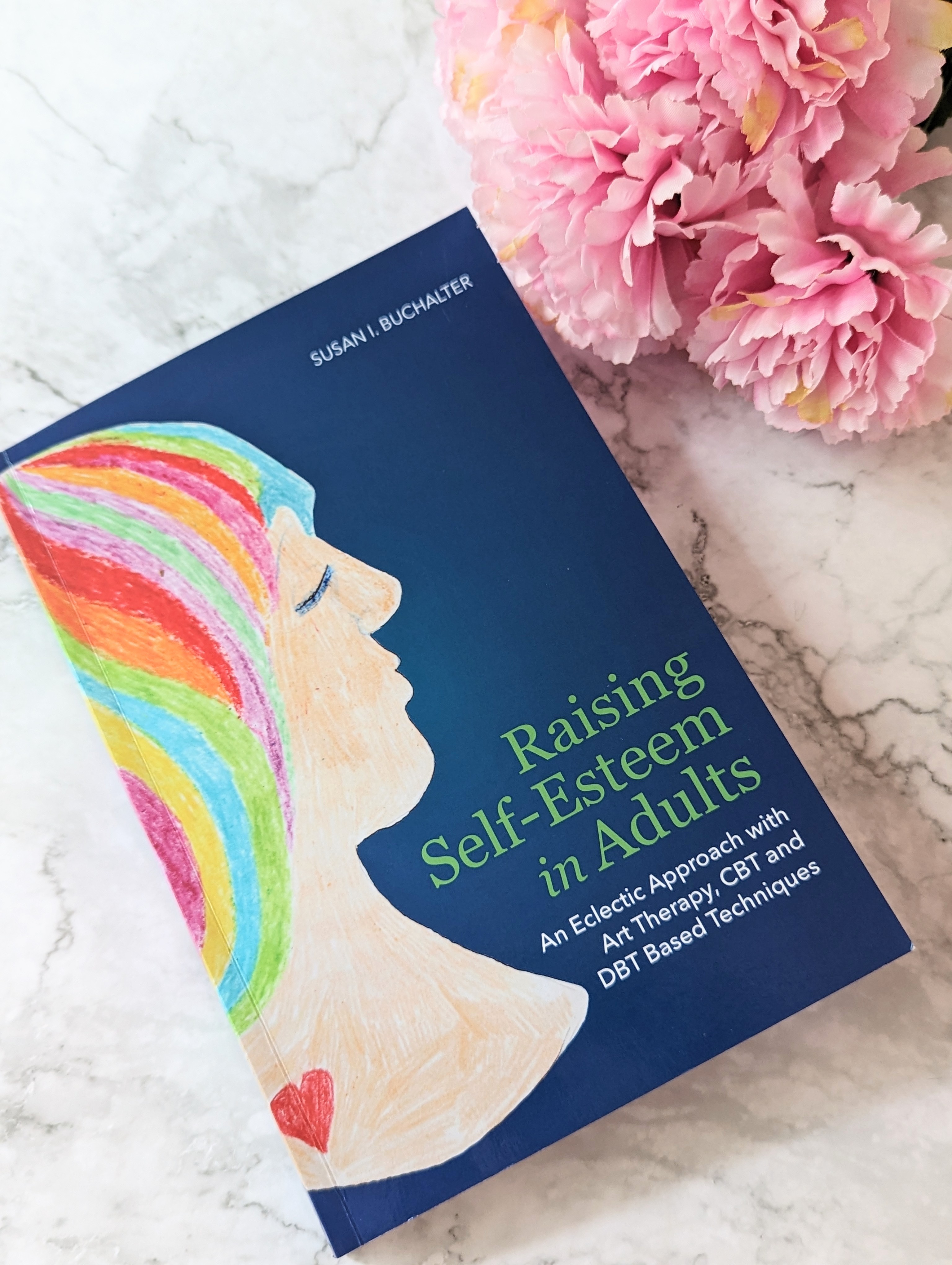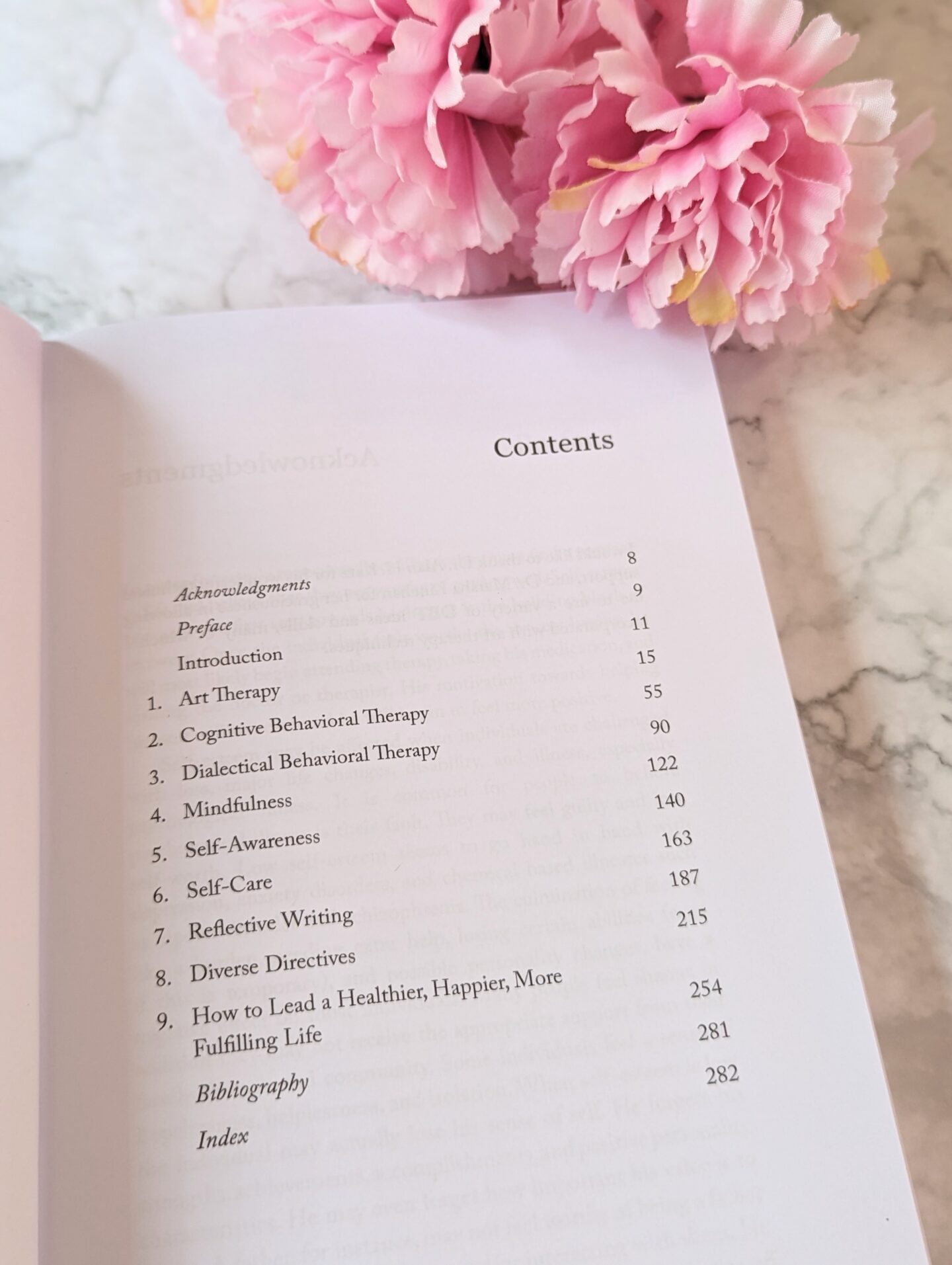
As a mindset and well-being coach, I am always looking for more practical tools and techniques to use with my clients, and also with friends who come to me for support and advice.
Low self-esteem is the most common problem that women come to me with, especially mums. Somewhere after becoming mums we start to neglect our own needs and this can chip away at our confidence. Career-wise imposter syndrome often kicks in, especially when seeking a change of career or returning to work after time off.
Susan I.Buchalter is a Senior Clinical Therapist and Art Therapist at the University Medical Center at Princeton and has a private practice in Lawrenceville, New Jersey. She has over 30 years experience leading art therapy and psychotherapy groups. Susan’s book, Raising Self-Esteem in Adults, covers helpful approaches such as art therapy, cognitive behavioural therapy and dialectical behavioural therapy to use with clients. The book is aimed at professionals such as social workers, therapists and mental health professionals. Art therapy is something which I am keen to learn more about and a tool that I would love to use in my coaching. I have found Susan’s resources really helpful for my own personal development, and it has helped me to get to the point where my self-esteem is at a healthy level alongside doing my own inner-child healing.

The book has 9 chapters.
- Art Therapy
- Cognitive Behavioural Therapy
- Dialectical Behavioural Therapy
- Mindfulness
- Self-Awareness
- Self-Care
- Reflective Writing
- Diverse Directives
- How to Lead a Healthier, Happier, More Fulfilling Life
The introduction covers the basics of self-esteem and the possible causes of low self-esteem, and how it often goes hand in hand with conditions such as depression and anxiety.
Coaching and therapy can feel quite intimidating to a client, especially when they haven’t had anyone hold up space for them to open up before. This is where art therapy can be helpful. It has helped me in the past when I wanted to communicate my worries, but struggled to say them out loud. Mindful colouring is something that I have in my personal anxiety toolkit too. Susan explains how art promotes creative expression and release of emotions. It gives the client a point of focus, and I find it is also helpful to use with my older daughter.
There are a range of exercises in this section to use with your client, some of which I used with a friend to get her feedback. She loved the Gratitude I exercise as body confidence was something that she wanted to work on. The content in this chapter is amazing and it has given me so much motivation to use art therapy techniques within my own coaching. This was by far my favourite chapter and the one which offered me the most value.
Dialectical Behavioural Therapy is still fairly new to me and something which I find great pleasure in learning about. It is described as evidence-based therapy, based on Zen-Buddhist philosophy. Once again, this chapter offers a range of exercises to do with clients. There is one called Distress Tolerance: Dream Vacation. This is one that I have used for myself during a very stressful period and definitely one that I will use with clients going forward.
The Self-Awareness chapter and tools are probably the first one that I would use as a client. Self-Awareness is important when we are trying to get to the end goal of purpose and clarity, but we often struggle to talk positively about ourselves or describe our personal goals and aspirations. The exercises in this chapter cover so much and I loved the inclusion of mind maps.
Another important chapter is Diverse Directives and how to improve relationships. What we need/want from a friendship and relationship changes so much over time. As we get older we seek smaller, closer friendship groups compared to when we are younger where we seek out more social interaction friendships. Susan asks you to explore the following.
- What qualities do you look for in a friend?
- What qualities do you bring to a friendship?
- Describe an ideal friendship.
As a mum, this is an exercise that I feel is great to use with your kids too, especially as they approach high school and navigating friendship challenges. If we can use these tools with our kids, then hopefully, we can empower them to be happy, confident and full of healthy self-esteem as adults.
Every chapter in this book offers so much value, self-reflection and ah-ha moments. The tools and techniques are explained well and without too much complication for the reader, the exercises include a list of materials that you need, followed by how to do them and prompts to start conversations with the client.
As a coach, this is going to be a very valuable resource, especially when working with mums who are currently struggling with low self-esteem, low self-worth and navigating life as a new mum.